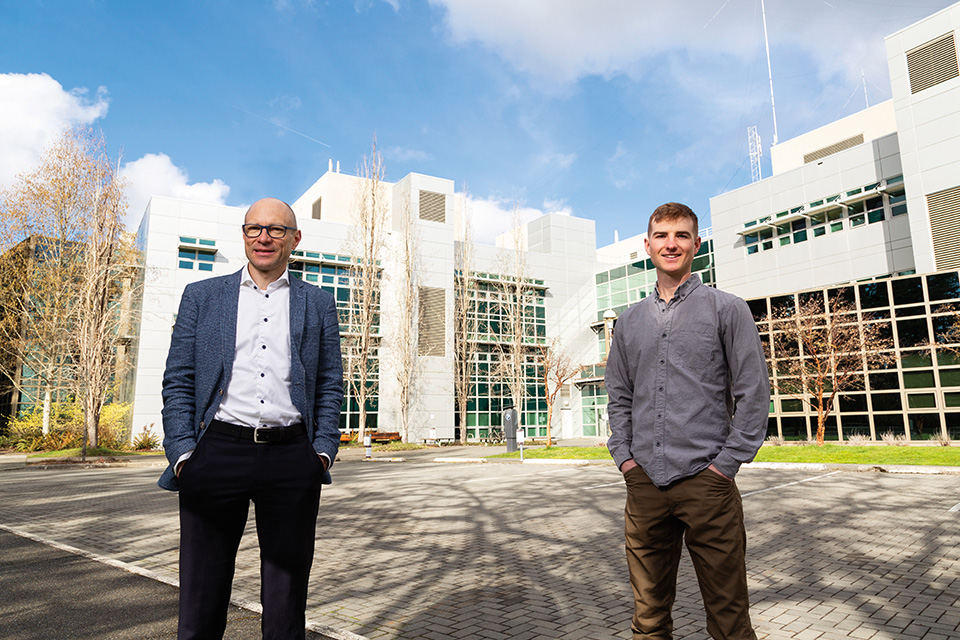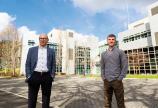Building an emerald city
- Anne Tolson

An initiative aimed at halving greenhouse-gas emissions among dozens of high-profile Greater Victoria buildings is proving how effective partnerships between industry and academia can be.
A team of researchers from UVic civil engineering is providing critical expert advice to the Greater Victoria 2030 District, a group of property managers and owners who plan to cut emissions from thirty-seven local buildings that have a combined total of 3.6 million square feet, including Mayfair and Uptown malls, Saanich Commonwealth Place and the Victoria Conference Centre.
“As researchers, we excel at determining the pressures the private sector will face in the future and opportunities to mitigate them today,” says Andrew Pape-Salmon (Dipl ’06) an adjunct professor and one of four members on the UVic team. “For this project, we’re providing analysis tools to help property managers reach better decisions when making investments in their buildings.”
The 2030 Districts Network currently has 21 US members and two Canadian—Greater Victoria and Toronto. The local group is hosted by the Building Owners and Managers Association of BC (BOMA BC), with eleven real estate partners that include regional and multinational property owners, developers and managers, as well as the municipalities of Victoria and Saanich.
The UVic team’s first step has been to collect data to produce customized energy-benchmarking reports, which detail how buildings are currently performing relative to similar buildings.
“With the benchmarking stage now complete, we’re getting into the nitty-gritty of the building-retrofit design,” says Pape-Salmon. “This involves using an energy model to help select the cost-optimized improvements to existing buildings.”
Master’s student Kevin Cant, who undertook much of the initial benchmarking work, is excited to begin using novel modelling techniques to identify the best ways for the property managers to reach their emission targets.
[Property] owners and managers are leading the way and their investments will improve their buildings, reduce energy and emissions, and enable our research team to analyze state-of-the-art solutions. Being able to partner with them is fantastic because it means our research will help lead to real, measurable change.
—Kevin Cant, UVic civil engineering master's student
Once a property manager selects a building’s retrofit design, UVic’s job will be complete. At that point, the manager will hire a private engineering firm to undertake the detailed design that will inform the physical work.
The Greater Victoria 2030 District is supporting the commercial real estate sector to get ahead of and, in fact, inform future building codes. By finding ways to optimize the designs for retrofitting so many diverse buildings, the UVic researchers expect to be able to draw conclusions that will be submitted as code-change requests to the National Building Code and lead to innovative solutions for the market.
“The work we do at UVic is independent, objective analysis of innovative solutions—we’re an integral part of the partnership,” says Pape-Salmon.
The UVic team—which also includes Dr. Ralph Evins and PhD student Rajeev Kotha—is involved early in the project to help achieve the challenging 2030 targets. The group received a three-year grant from the CleanBC Building Innovation Fund to do the job.
“The three-year window is an ideal timeframe for the research team to do its work,” says Pape-Salmon. “We’ll support the partners with the information they need to make informed decisions about building renewals and to validate their historic achievements.”

